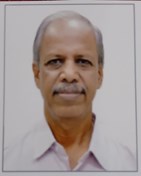Conference on iRAD & e-DAR

Arvind Shenoy, Consultant GI Council.
India has the dubious distinction of having the highest number of road accidents in the World. Road accidents are human tragedies which involve enormous human suffering, and they impose huge socio-economic costs in terms of untimely deaths, injuries, and loss of potential income. Compensation to victims or the families of victims of road accident used to entail long years. Hon’ble Mr. Justice (retd) J R Midha of Delhi High Court sought to bring in a mechanisam to speed up the process. Thus came in DAR (Detailed Accident Report). Supreme courts too issued directives too. Ministry of Road Transport & Highways (MoRTH) introduced it in Central Motor Vehicle Rules. Accordingly, an app for enabling DAR was developed.
A one-day conference was organized on 21st November 2022 for a briefing on iRAD (Integrated Road Accident Database & e-DAR (Electronic Detailed accident Report) at Insurance Institute of India, Bandra Kurla Complex, Mumbai. ninety three Officials of General Insurance Industry & GI Council attended the conference. The Integrated Road Accident Database (iRAD) Project is an initiative of MoRTH and developed by NIC.
Dr. Mohan, Principal Consultant, NIC, who had headed the team at NIC, Chennai on development of iRAD App stated that the app was primarily developed for use by Police and other stake holders to report road accidents. Other details such as road conditions, frequency & severity of accidents, hot spots, road owners’ involvement were also entered to carry out data analytics for road engineering and road safety measures for reducing accidents. He made a power-point presentation as well as gave a live peek into the iRAD App.
He explained that earlier apprehensions by some state Police Officials on increase in workload were addressed by a demo to states on the seamless flow of data already entered in iRAD app. Vahan and Sarathi database are interfaced with iRAD. He informed that all States and UTs were on board, State Police Departments (except W. Bengal) were entering data into the App. W. Bengal’s concerns have been addressed and the state would in a week or 10 days, be a part of the iRAD platform. The App is compatible with both Android and iOS. iRAD can also be accessed in regional languages of each state apart from Hindi & English, and the screens are adapted to each state. The interface ensures lower costs and better programming flexibility.
When the DAR Rules were drafted, digital platform with its integration into iRAD was taken up. A live demo of the e-DAR process was made with some sample data. Even the Hon’ble Supreme court asked for similar app on immediate reporting of road accidents and intimation to insurers. NIC presented a demo of iRAD before the Hon’ble SC. It was shown that the e-DAR is much more than just fast intimation of accidents. The bench was satisfied that it will help in faster claims settlement.
After the demo on iRAD Dr. Mohan presented the digital e-DAR app wherein the Insurance Companies are a major stake holder. The Log-in credentials would first be given to GI Council who could create individual company logins and then each company admin can give login rights to other officials within their organization. An unique Accident number would be generated for each accident and making it easy to track. Vahan database and CCTNS data are pulled into iRAD through integration.
Reports on the number of FIRs filed, number of deaths etc. can be accessed by RTOs, Transport Dept, Police and MoRTH for their analytics for study and making roads safer by reducing accidents red zones. The entire country has been divided in grids of 2 square kilometers thereby there are 18 lakh grids and the exact GPS location of the accident spot in each of these grids is recorded. For accidents there is a provision for photo of the victim and drivers, besides the vehicles involved and also voice recording of witnesses. Where internet connection is not available in remote areas certain basic details would still flow offline.
The DAR formats are set as prescribed in CMV Rules with workflow and timelines for submission by concerned stakeholders. DAR procedure was integrated with iRAD so that there is no duplication of work by Police and others. Apart from Insurers and MACTs (thru e-Courts), Road owning authorities and Hospitals would also be linked to so that victims’ details and MVI report all would be generated in the e-DAR App. If liability is accepted, Insurers would have to submit to MACT the offer in Form IX within 30 days of submission of e-DAR by Police. If offer is accepted by claimant, the settlement would be recorded as compromised settlement and closed. If Insurers deny liability or offer is not accepted by claimants, the Written Statement would be filed by Insurer and owner /driver and heard by the MACTs for final decision.